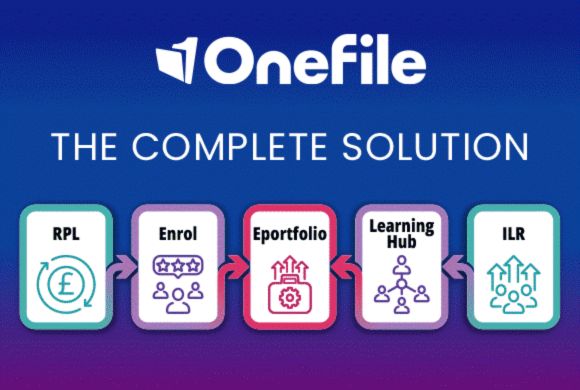High Value Courses Premium: Additional funding to encourage and support delivery of level 3 courses that enable a more productive economy

Qualifications attracting high value courses premium – 16 to 19 funding: High Value Courses Premium
The High Value Courses Premium is additional funding to encourage and support delivery of selected level 3 courses in subjects that lead to higher wage returns and support the Industrial Strategy, to enable a more productive economy.
Outline of the High Value Courses Premium
The purpose of the High Value Courses Premium (HVCP) is to support the sector to grow the number of students studying selected substantial level 3 study programmes (including T Levels) in selected A level subjects or Sector Subject Areas (SSAs). These subjects have been selected using data on earnings outcomes and on their relevance to the UK Industrial Strategy as a way of indicating which will help to develop a more productive economy.
In summary students aged 16 to 19 on level 3 Education and Skills Funding Agency (ESFA) funded study programmes which include at least 2 A levels or another qualification of 360 guided learning hours (GLH) or more, included on our published list of qualifying qualifications or enrolled on T Levels in the selected SSAs, will attract an additional £400 for each year they are on their programme.
Funding will first be paid through mainstream 16 to 19 allocations for 2020 to 2021 academic year. These allocations will be based on full year ILR/HESA/Census data from the 2018 to 2019 academic year.
The policy intention is that providers utilise this funding from the 2020 to 2021 academic year, to encourage an increase in enrolments in substantial level 3 programmes that include these priority subjects and SSAs to build their capacity to deliver these programmes to more students to a high standard.
Purpose of this guidance
The purpose of this guidance is to set out the conditions under which the ESFA will pay the HVCP in the 2020 to 2021 academic year allocations.
Introduction
The Government’s Industrial Strategy sets out a long-term plan to boost productivity by backing businesses to create good jobs and increase the earning power of people throughout the UK with investment in skills, industries and infrastructure.
Education and skills are key components to addressing national and local productivity challenges, making sure individuals have the skills needed to meet the needs of the new economy. On 31 August the Chancellor announced an additional £400m of funding for 16 to 19 education. The announcement included the following statement:
“Colleges and school sixth forms will also get £120 million to help deliver expensive but crucial subjects such as engineering which lead to higher wages and, ultimately, a more productive economy.”
This guidance covers how approximately half of these funds will be allocated to providers to encourage and support the study of specific subjects that generate higher wage returns and are also identified in the Industrial Strategy as a priority. There will also be an increase in some programme cost weightings (PCWs) to recognise additional costs. This is covered in separate guidance.
Qualifications attracting the HVCP
The list of qualifying qualifications for 2020 to 2021 allocations is based on qualifications approved for funding for all or part of 2018 to 2019 academic year.
The criteria for selecting the qualifying qualifications are that they must be:
- approved for 16 to 19 study programme funding during at least part of the 2018 to 2019 academic year
- an A level in one of the following selected subjects
| Qualifying qualifications |
|---|
| Biology |
| Chemistry |
| Computer science |
| Design and technology |
| Electronics |
| Further mathematics |
| Mathematics |
| Physics |
| Statistics |
- or a level 3 qualification (other than an A level) with recommended GLH of 360 or more in one of the following selected Sector Subject Areas (SSAs). From 2020 to 2021 academic year this will include those T Levels in the relevant SSA
| Qualifying qualifications |
|---|
| SSA 4.1- Engineering |
| SSA 4.2 – Manufacturing technologies |
| SSA 4.3 – Transport operations and maintenance |
| SSA 5.2 – Building and construction |
| SSA 6.1 – ICT for practitioners |
These subjects have been selected because they both have higher earnings outcomes according to available data and contribute to the UK Industrial Strategy. A level subjects and non-A level subject areas have been considered separately in this process. This way of selecting programmes identifies those most likely to contribute to a more productive economy.
The list of qualifying qualifications for 2021 to 2022 allocations will be based on qualifications approved for funding for all or part of 2019 to 2020 academic year. An initial list will be published in December 2019 and confirmed in November 2020.
The list of qualifying qualifications for 2022 to 2023 allocations will be based on qualifications approved for funding for all or part of 2020 to 2021 academic year. An initial list will be published in February 2021 and confirmed in November 2021.
The HVCP does not pre-empt or anticipate the outcome of the ongoing review of post-16 qualifications at level 3 and below. The HVCP funding is allocated to qualifications currently funded by the ESFA and eligibility for HVCP funding does not mean that a qualification will or will not continue to be included on the ESFA’s list of qualifications approved for funding for 16 to 18 year olds in future.
The 16 to 19 funding methodology is reviewed in advance of each academic year; funding is subject to spending review allocations and all funding rates are subject to change annually.
Students eligible for the HVCP
Students eligible for ESFA 16 to 19 study programme funding, both full and part time, can attract the premium. To attract the premium students will also need to be enrolled on a qualifying level 3 study programme, defined as follows:
- a study programme consisting of at least 2 of the selected A levels*
- a study programme with a core aim of a qualifying level 3 qualification in the selected SSAs with recommended GLH of 360 or more
- from 2020 to 2021 academic year a T Level in one of the selected SSAs
*A level double awards are treated as 2 A levels. AS level double awards are not counted
Providers covered by the HVCP
All schools, colleges and other providers receiving a 16 to 19 study programme allocation from the ESFA in both 2020 to 2021 and 2018 to 2019 academic years with eligible students will be eligible to receive the HVCP in their 2020 to 2021 allocation.
Infrastructure changes such as mergers and demergers will be taken into account as far as practicable in calculating the eligible amounts.
Providers that did not have an allocation in 2018 to 2019 academic year but do have one in 2020 to 2021 academic year will receive an allocation based on an average factor for their institution type.
HVCP – funding rate
The premium will be paid at a rate of £400 per student per year the student is on their study programme or T Level. Funding rates are reviewed annually.
HVCP and the Advanced Maths Premium (AMP)
The HVCP operates in parallel to the pre-existing Advance Maths Premium. Students may qualify for both if they meet the respective criteria for funding.
How the HVCP is calculated and paid
The HVCP will be calculated as follows:
Step 1 – Identify students eligible for the HVCP.
Step 2 – Calculate the amount of HVCP per institution by:
- multiplying the total number of eligible HVCP students per institution by the funding rate of £400
The HVCP will be paid within the standard 16 to 19 funding allocation on the usual monthly profile.
Examples of students eligible or not for the HVCP and how the allocation will be calculated can be found at Annex A.
The HVCP in future academic years
The purpose of the HVCP is to encourage and support the sector to grow the number of students studying substantial level 3 study programmes (including T Levels) in selected A level subjects or selected SSAs.
The normal principles of lagged allocations apply, therefore each year allocations will be lagged back to the last full year of data, as illustrated in the table below. This encourages providers to grow priority provision to attract increased funding in future years.
| Year of allocation/payment | Full year’s data used to inform the allocation (the “relevant year”) |
|---|---|
| 2020 to 2021 | 2018 to 2019 |
| 2021 to 2022 | 2019 to 2020 |
| 2022 to 2023 | 2020 to 2021 |
This means that providers will be able to prioritise their provision in 2020 to 2021 academic year to increase their allocation in 2022 to 2023 academic year.
We envisage that 2021 to 2022 allocations will be based on 2019 to 2020 data and 2022 to 2023 allocations will be based on 2020 to 2021 academic year. This encourages providers to enrol more students on these selected substantial level 3 programmes in the 2020 to 2021 academic year and provides resources to better meet the needs of students taking these subjects.
We expect that the same criteria as set out above will apply to identifying relevant qualifications in future, but the list of qualifications will be updated annually to reflect the qualifications which were approved for funding in the relevant year.
From 2020 to 2021 academic year this will include those T Levels in the relevant SSA.
Monitoring
Attaching a premium to a particular subject area is a new approach and one that will need to be monitored carefully to ensure that it does encourage increased participation and attainment at level 3 in these specific sectors/subjects.
Monitoring will be conducted as part of the ESFA’s ongoing monitoring of provider behaviour, and we will continue to contact providers where data, audit feedback or other feedback indicates that they are operating outside of normal study programme rules.
The government will work closely with the sector to evaluate and review this approach post 2020-21 to make sure it is delivering improved outcomes for young people and is incentivising colleges and sixth forms to offer valuable technical and vocational courses.
Funding guidance
Further information will be found in the 16 to 19 funding regulations and the rates and formula funding guidance for 2020 to 2021 which will be published in 2020.
The qualifications that will attract the high value course premium.
Documents
Qualifications attracting high value courses premium November 2019
ODS, 57KB
This file is in an OpenDocument format
Details
The high value course premium (HVCP) is 16 to 19 funding to encourage delivery of selected level 3 courses in subjects that are crucial for the labour market, lead to higher wage returns and, ultimately, a more productive economy.
This spreadsheet lists the qualifications which will attract the high value course premium (HVCP).














Responses